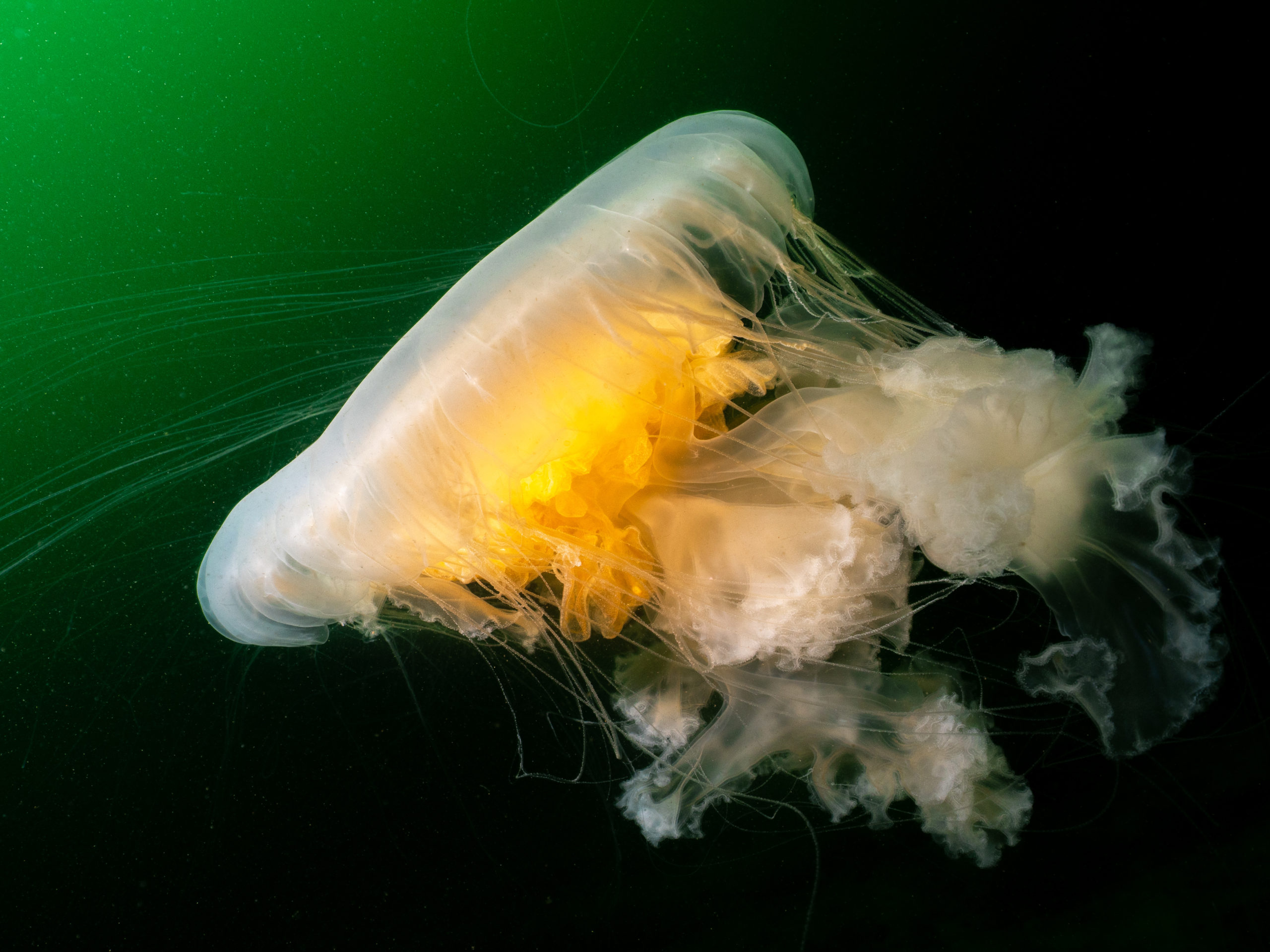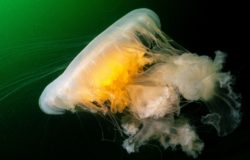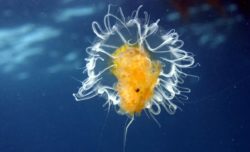
Sea Wonder: Egg-yolk Jelly
Named for its uncooked egg-like appearance, the egg-yolk or fried egg jelly (Phacellophora camtschatica) is a species of jellyfish that lives in cool waters and spends most of its time motionless, drifting through the water column. At first glance, they seem pretty ordinary beyond their unique appearance, but these invertebrates are integral parts of the ocean food web and serve as vehicles for hitchhikers like juvenile crabs or amphipods.

An Egg Yolk Jelly in Monterey Bay National Marine Sanctuary Photo Credit: Michael Alyono
Description
Like their name suggests, egg-yolk jellies look like the contents of a bird egg that made its way into the ocean instead of a frying pan. Their gelatinous body or bell is milky white can reach a maximum diameter of about two feet when fully grown and surrounds a bright yellow gonad in the center. Slightly below the bell are clusters of tentacles includes sensory organs called rhopalia and lobes called lappets that help the bell pulsate. Extending from the bell, they have about 16 groups of trailing tentacles that are either translucent or purple in color used to sting and trap their prey, tentacles that can be up to 29 feet long!
Diet & Habitat
These jellies feed on zooplankton and smaller species of jellies. Since their motion is pretty limited, egg-yolk jellies are passive feeders that wait for potential prey to cross the path of their tentacles, which they use to sting and paralyze their victims before moving them to their mouth. Luckily, the sting is pretty mild and doesn’t have much of an effect on human skin.
The egg-yolk jelly can live in cooler, temperate waters all over the world, including in the Atlantic and Pacific oceans and the Mediterranean and Aegean seas. It is most common in the northern Pacific, though, including in California’s national marine sanctuaries. In fact, this jelly species is one of the largest species of jellies found in Monterey Bay National Marine Sanctuary!
Life History
Like other jellies, the egg-yolk jelly has a pretty simple life cycle, beginning its life as an egg that hatches, attaches to solid structures called polyps that allow them to create genetic clones of themselves that mature into the adult jellyfish we recognize. Adult jellyfish can release gametes into the water column for sexual reproduction that creates genetic diversity in their populations.
These jellies prefer a pretty motionless life, pulsating their bells occasionally but relying on ocean currents to carry them. They are so slow moving and have such a mild sting that juvenile crabs and amphipods will hitch a ride on their smooth bells, and small fishes like juvenile jack fish can live amongst their tentacles for protection. These hitchhikers don’t get a free ride though – experts believe the crabs and amphipods feed on parasites that would otherwise live on the jelly’s bell and cause damage to it.
Threats & Conservation
Egg-yolk jellies can experience physical traumas to their bell from strong ocean currents and are prey for animals like sea turtles, marine mammals, and sharks. Their populations ebb and flow, but water quality issues like pollution, acidification, and heat that are harmful to other species can actually foster jelly growth, helping to create huge swarms of this and other jelly species, which in turn harms the ecosystems in which they live. These jellies don’t receive protections under federal, state, or local laws but they are important to monitor as they can serve as sentinels for ocean quality and ecosystem health.

